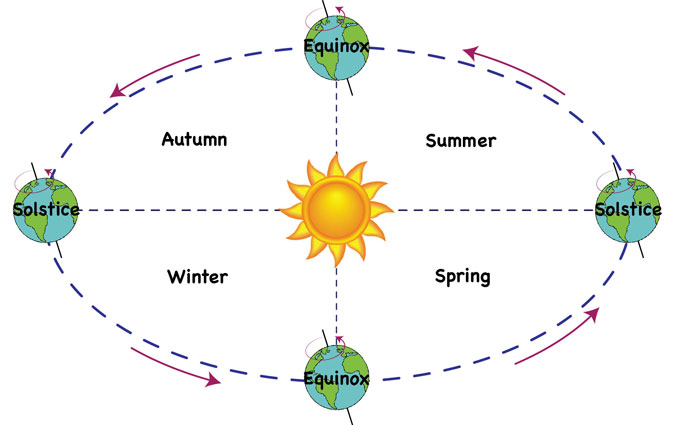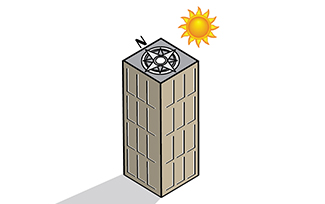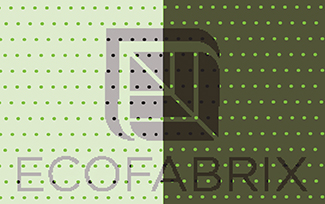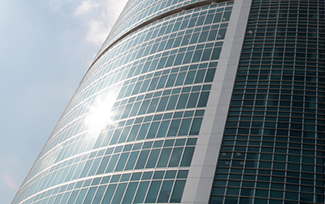ECLIPTIC PATH & ANGLE OF THE SUN

Figure 1.1
As the earth revolves around the sun the amount of the sun’s energy that falls at any given point is dependent upon the earth’s position and the angle at which the sunlight hits the earth (Figure 1.1). In summer, the earth’s axis tilts towards the sun, making it appear at its maximum height in the sky (Figure 1.2). This direct angle focuses the energy like a spotlight and, therefore, each point the light hits receives the maximum amount of energy.

Figure 1.2
In winter, the angle of the sun is much lower causing the light to hit more surface area. Since the same amount of solar energy is being received but is dispersed over a much larger area, the light is less focused and less intense. Versatility is key in combating these effects, and requires a solution that can adapt to the changing angle of the sun, such as a roller shade, which can be lowered or raised to adjust with the seasons.
ECLIPTIC PATH & FACADE DIRECTION

Figure 2.1
The apparent motion of the sun throughout the day is an important factor when designing an interior space. The placement of windows, which trap the sun’s heat, will require different solutions depending on the direction in which they face. Depending on your longitude the sun’s location in the sky will vary, but regardless where you are, it will also change throughout the day and the year. Windows that receive daylight throughout most of the day will require more protection than windows that are shaded or blocked by obstruction. A designer should consider all the possible positions of the sun when selecting the best fabric to use for a project.
Assuming that we are working in North America, the following statements can be made:
Northern Exposure: A northern exposure will typically require less sun protection throughout the day, since the sun’s rays will mostly come at an angle from the south, and the building itself will block much of the direct light. In most locations in the US, a 5%-10% solution is recommended for a northern exposure.
Southern Exposure: A southern exposure will typically experience the most sunlight throughout the day, and may require more protection than other facade. In warmer climates, a 1%-3% solution is recommended. In colder climes, 5%-10% openness will allow more sunlight into the space and help to naturally heat the interior.
Eastern or Western Exposure: A western exposure will require sun protection in the late morning to afternoon. In warmer climates, a 3%-5% solution is recommended. In colder climes, 10% openness will allow more sunlight into the space and help to naturally heat the interior.
COLOR

Figure 3.1
Completely separate from aesthetic, the color and texture of a solar fabric influences how much radiant energy from the sun it will absorb or reflect and can greatly impact the way that the fabric performs. Every color reflects a certain amount of light while absorbing the rest as heat energy.
Light colored fabrics– Light colors reflect a lot of light and absorb little heat. Solar fabrics that are light in color, or have a light colored backing, will reflect more of the energy back out of the space while soaking up very little heat. Light color fabrics should be used in situations where heat gain is an issue, and will help reduce heat build up better than a darker fabric. Lighter colored fabrics are also harder to see through, an aspect that should be taken into consideration if maintaining views through the fabric is a priority.
Dark colored fabrics– Dark colors tend to reflect little light while absorbing lots of heat energy. Solar fabrics that are dark in color will absorb light, and will provide better glare control than a more reflective, lighter colored fabric. This can also create a concern if heat gain is an issue, but in colder climates can help provide more warmth in the space. Darker colors are also easier to see through, which can greatly increase the visibility through the fabric and help maintain the view outside.
OBSTRUCTIONS & REFLECTIONS

Figure 4.1
Often times, windows on the same facade and even the same floor, are affected by external conditions surrounding the building. For instance, one window may have a large tree blocking the sun from hitting the glass, but a window further along the same wall is not obstructed and is subjected to maximum exposure. Or perhaps there is a highly reflective building across the street, which causes the light to reflect directly into a window on the northern façade, which should receive the least amount of light through the day. Combining multiple openness factors of the same color in the same space can combat conditions such as these.








